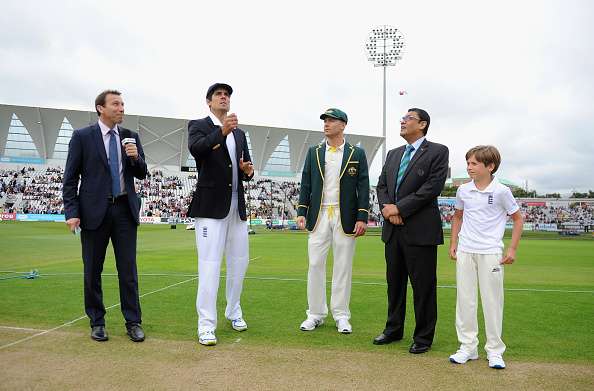A cautious welcome to the ICC’s proposal to offer those nations currently excluded from the closed shop of Test cricket a way in through the establishment of two divisions with promotion, relegation and lower-level entry to the ‘league’ for Associate nations, like Ireland, Afghanistan and Nepal, or, in future, USA or China.
Put simply, the powers that be have recognised the merit in the argument that for Test cricket to survive, it must be more than a members-only club.
Somewhat less enthusiasm however, for the notion that, if need be because of separation by relegation, iconic series such as the Ashes, or money-spinners like England versus India or South Africa, could still be played extra to, and outside of, such a system.
As of now, the radical proposals outlined by ICC chief executive Dave Richardson remain to be ratified by the international game’s governing body, but should that happen at their annual conference in Edinburgh later this month, this brave new world of the Test Cricket League could be dawning as early as 2019.
Up to a point, though the ideas are revolutionary, the logic is sound.
With the rise of domestic T20 competitions and its draining effect on Test cricket in terms of interest, the pick of the pool of available and willing talent (see West Indies Test XI v West Indies IPL recruits) and consequent reduction in commercial value, the longest form of the game must find a way of winning all those things back. And the ‘buzzwords’ are context and meaning.
According to Richardson: “There’s a general realisation now that, if we’re going to keep Test cricket going well into the future, we can’t just say it’s going to survive on its own.
“Unless we can give some meaning to these series beyond the rankings and a trophy, then interest in Test cricket will continue to waver….
“We have to create a proper competition structure, which provides promotion and relegation and opportunities to get to the top.”
As for that structure, the suggestion is a split of seven teams in Division One and five in Division Two, with one team going up and one down at the end of every two-year cycle.
In Division One, England, for instance would play Test series against the other six teams during that period, with the same number of points available whether those series comprise two, three or, in the case of the Ashes, five Tests.
And in case any of us were concerned that, if either England or Australia, or India or South Africa happened to slip into Division Two for any length of time we would be deprived of our regular Ashes fix or high-profile match-ups against those others mentioned, never fear.
Even if the two oldest rivals in Test cricket were to find themselves either side of the great divide, it seems there would be nothing to stop the two boards scheduling a series between themselves, which would be played outside of the league structure, and which would have no bearing on it. Test ‘friendlies’, sort of.
“The beauty of leagues,” urges Richardson, “is that, in theory, you will have a more competitive competition and teams playing each other that are of a more equal standard.
“They will all be striving for something. There’s something at stake. They will be thinking, ‘we could end up (being relegated to) the Intercontinental Cup if we’re not careful here’.
“Hopefully that will inspire performance and make the matches more competitive.”
Come again, Dave?
For what you seem to be saying is that while we need all Test cricket to have context and meaning, that does not apply when it comes to England playing Australia, India or South Africa who can play each other any time in Test series which would then be, by your definition, out of context, or, to put it more bluntly, meaningless.
No.
Surely, for such a system to work at all, it must not only have structural integrity, it must also mean everything to those who watch it and those who support it.
In the specific case of England and Australia, it must be just as important as The Ashes, if not more so. And that should mean that if the bigger fish do end up swimming in different divisions they should not play against each other until either relegation or promotion brings them together again.
Richardson and those striving to protect Test cricket should be supported in their attempts to do so, but maybe they should also heed the words of ECB chairman Colin Graves.
“We are all for it (Richardson’s proposal), without a shadow of a doubt,” he said. “I think we have to do something with Test cricket to make it worthwhile, to get people back interested and make it relevant.
“If we end up in division two, it is our own fault, simple as that.”
For the point of such a system should be that those who do well should be rewarded for their efforts and those who don’t should pay the price, even if that price is the chance to play for the Ashes.
If not, it would be little better than window dressing.
This piece originally featured in The Cricket Paper, Friday June 3 2016












